Introduction
With Sedation Dentistry in Newport Beach, things are about to change. All that pain, all the drillings cannot affect you anymore. Let’s explore more in the following article.
It’s not you, but for many who experience chilling experiences while visiting a dentist. Did you know more than 36% of the population experience dental anxiety, shills, chills, and pain? In addition, 12% of them have a severe fear of even visiting the dentist. Well, those days are gone.
What is Sedation Dentistry in Newport Beach?
Sedation Dentistry in Newport Beach refers to the use of medication to help patients relax and manage anxiety during dental procedures. It is a valuable tool for patients who experience dental anxiety. To clear things out,
- It is a form of medication.
- Helps patients feel calm and comfortable during dental procedures.
- Unlike general anesthesia
- Relaxes patients who suffer from dental phobia, a more severe form of anxiety, according to BMC Oral Health.
- Minimizes the gag reflex and can make treatments more tolerable and comfortable.
- Finally, it lowers the pain threshold.
Well, now that we know more than a little of what this magical dental efficacy is, how to avail this service and whom to approach are the major concerns. To answer all these questions and help you obtain the best services, look no further than connecting with Dr. Smile; with decades of experience in the field, we know what is best for our customers. We are operational in Multiple areas and locations like Orange County, San Pedro, and Lomita.
Sedation Dentistry in Newport Beach—a new paradigm in modern dentistry
Here is a guide for you that will help you understand more about Sedation Dentistry in Newport Beach
1. Do all people need it?
One thing has to be cleared: this dental efficacy is not for extreme cases, but is ideal for the following.
- Patients with moderate or severe dental phobia or anxiety
- Those in need of expensive or multiple procedures at one visit.
- Children or adults with special needs, or those who find it difficult to stay still in one place.
- Anyone with limited pain tolerance
2. Types of sedation used
This should be as clear as day that implying and applying these efficacies is not the deed of any attendee dentist, but a professional. Someone like a Cosmetic Dentist in Newport Beach. It depends on the patient and the concerns the former has; depending on these, the professionals come up with different types of dentistry processes.
- Oral conscious sedation—take a prescribed sedative pill before the procedure; this helps the patients to remain awake and have a look at the administering procedure. This method is ideal for All-on-4 dental implants in Orange County.
- Nitrous oxide—laughing gas—is passed through the mask, which helps you feel relaxed and is often used for minor procedures.
- IV sedation is passed directly into the bloodstream and allows a deeper level of sedation and is ideal for longer or more invasive procedures.
- General anesthesia—this is used for extensive dental surgeries or patients with extreme dental anxiety. This renders the patients completely unconscious during the process. The treatment is ideal for removal and tooth extraction.
3. Benefits of Sedation Dentistry in Newport Beach
If you are one of those who sit back just because there is no cure for your pain, then it’s high time that you endured the pain.
- With the professional guidance of a Cosmetic Dentist in Newport Beach, the process turns out to be smooth.
- Pain management—reduces or eliminates pain during procedures; this makes the treatment comfortable.
- Helps patients lower the pain and increase the threshold of enduring the pain of dental work.
- Propels the recovery process- and provides a sense of relaxation and ease
- Offers a quick recovery process
- This is also known for maximizing the client base; let’s be real, who does not want a painless treatment for themselves?
4. The process of Sedation dentistry
a. Initial consultation
The consultation begins with an initial consultation. During the process, the dentist will ask you about your dental history, if any. You can discuss your previous experiences, dental procedures, or any other medical history that you might have.
b. During the procedure
Once both you and the dentist have agreed on the method of sedation, it is now time for you to begin the procedure. The sedative is administered, and the dentist will monitor the patient’s vital signs, and the level of sedation is decided throughout the procedure.
Our professionals will look out for any discomfort or mild pain; the dental team will provide specific postoperative care instructions tailored to the patient’s procedure, including guidelines on medications, dietary restrictions, and other oral care practices.
When you are done with all your proceedings, do visit for your follow-up sessions, which will help you to keep up with the longevity of your treatment.
C. On the day of your treatment:
- The sedative is administered, and your vital signs are closely monitored throughout.
- You’ll remain relaxed, possibly drowsy, but still responsive, depending on the sedation type.
- The dental team ensures you’re comfortable, adjusting sedation levels if needed.
Most patients report little to no memory of the procedure and minimal discomfort.
5 . Aftercare and Recovery
Once the procedure is complete:
- You’ll receive personalized aftercare instructions, including:
- Medication guidelines
- Dietary recommendations (often soft foods)
- Oral hygiene tips
- Recovery time varies depending on the sedation used. Nitrous oxide wears off quickly, while oral or IV sedation may require a few hours of rest.
It’s important to rest and avoid strenuous activity for the remainder of the day.
6. Follow-Up Visits
Follow-up appointments are essential to:
- Monitor healing and progress
- Address any lingering concerns
- Ensure the long-term success of your dental treatment
These visits help maintain your oral health and build confidence in future dental care
Conclusion
Sedation Dentistry in Newport Beach is nothing less than a boon in disguise for all those who have been struggling with dental anxiety. Not only does it help in reducing the pain, but it also helps in the faster healing of all our wounds. All you have to do is connect with the right professionals, who will help and guide you in the most accurate way possible. Connect with Dr. Smile; we are here to help you.
Frequently asked questions
Q. What is sedation dentistry?
Sedation dentistry uses medication to help patients relax during dental procedures. It’s especially helpful for those with dental anxiety, sensitive teeth, or complex treatments.
Q. Is sedation dentistry safe?
Yes, when administered by trained professionals, sedation dentistry is generally safe. Dentists review your medical history and monitor you throughout the procedure.
Q. What types of sedation are used in dentistry?
- Nitrous oxide (laughing gas)—mild sedation
- Oral sedation—a pill taken before the appointment
- IV sedation—deeper sedation through a vein
- General anesthesia—complete unconsciousness (used rarely)
Q. Who should consider sedation dentistry?
It’s ideal for:
- People with dental phobia
- Those needing extensive procedures
- Patients with a low pain threshold or a strong gag reflex
- Children or adults with special needs
Q. Will I be asleep during sedation dentistry?
Not necessarily. Most forms of sedation keep you awake but deeply relaxed. You may not remember much of the procedure afterward.
Q. How long does it take to recover from dental sedation?
Recovery depends on the type of sedation. Nitrous oxide wears off quickly, while oral or IV sedation may require a few hours and someone to drive you home.
Q. How is All-on-4 different from traditional implants?
Traditional implants often require one implant per tooth and bone grafting. All-on-4 uses fewer implants and avoids grafting in many cases, making it faster and more cost-effective.
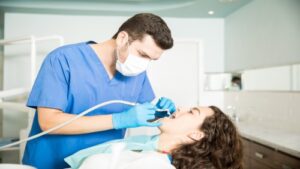
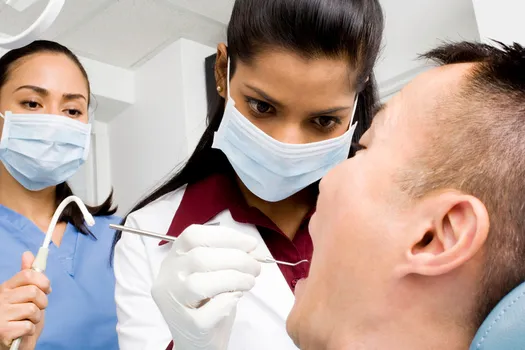


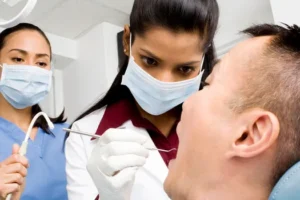
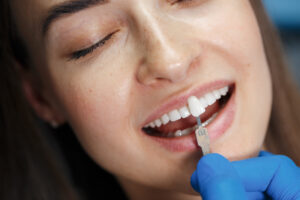
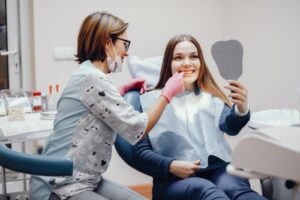
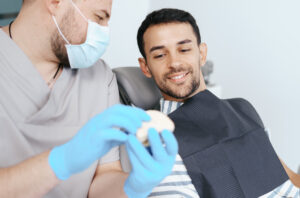
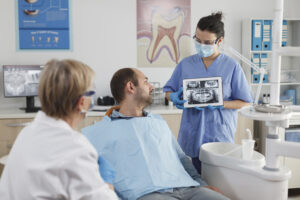
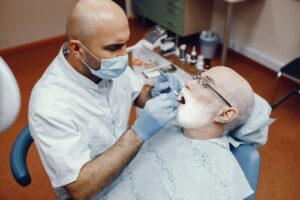


Leave a Reply